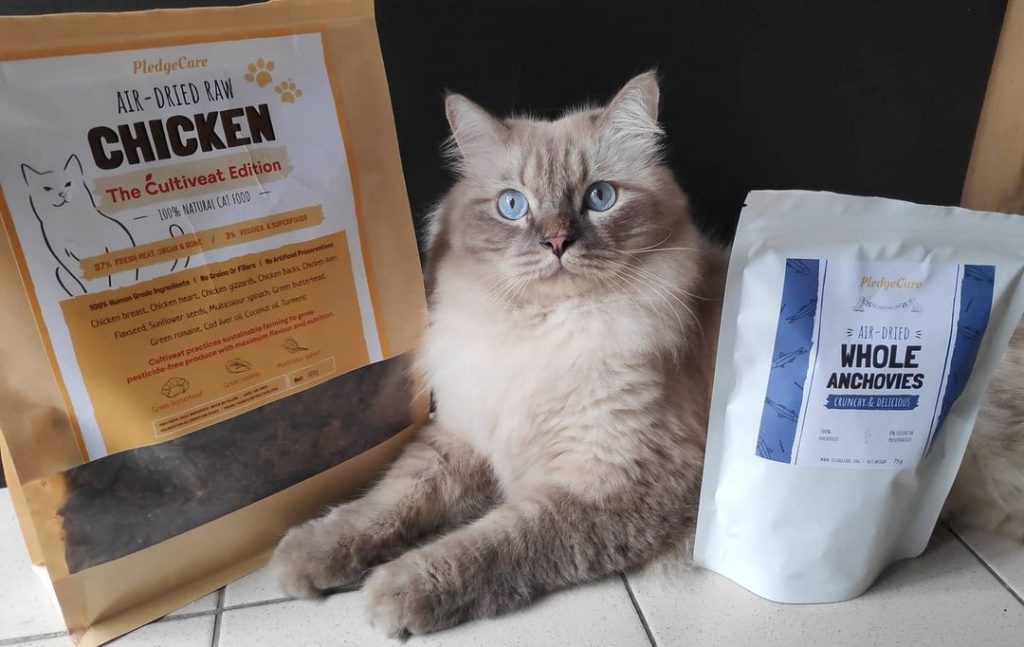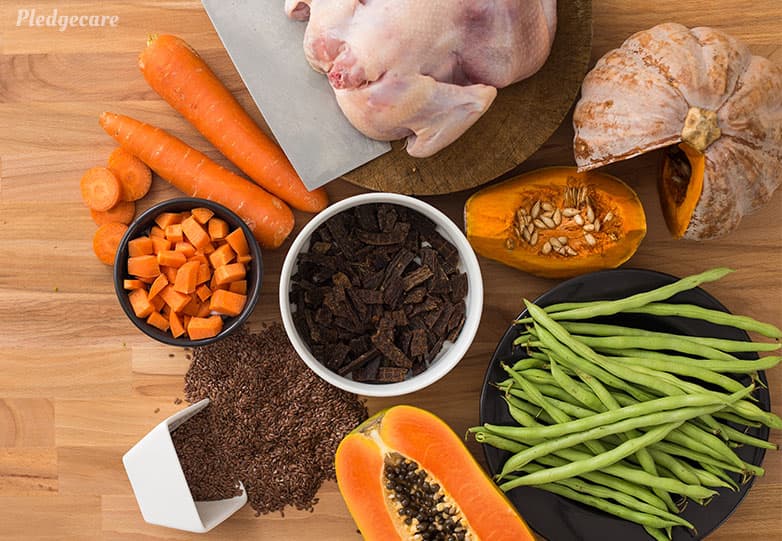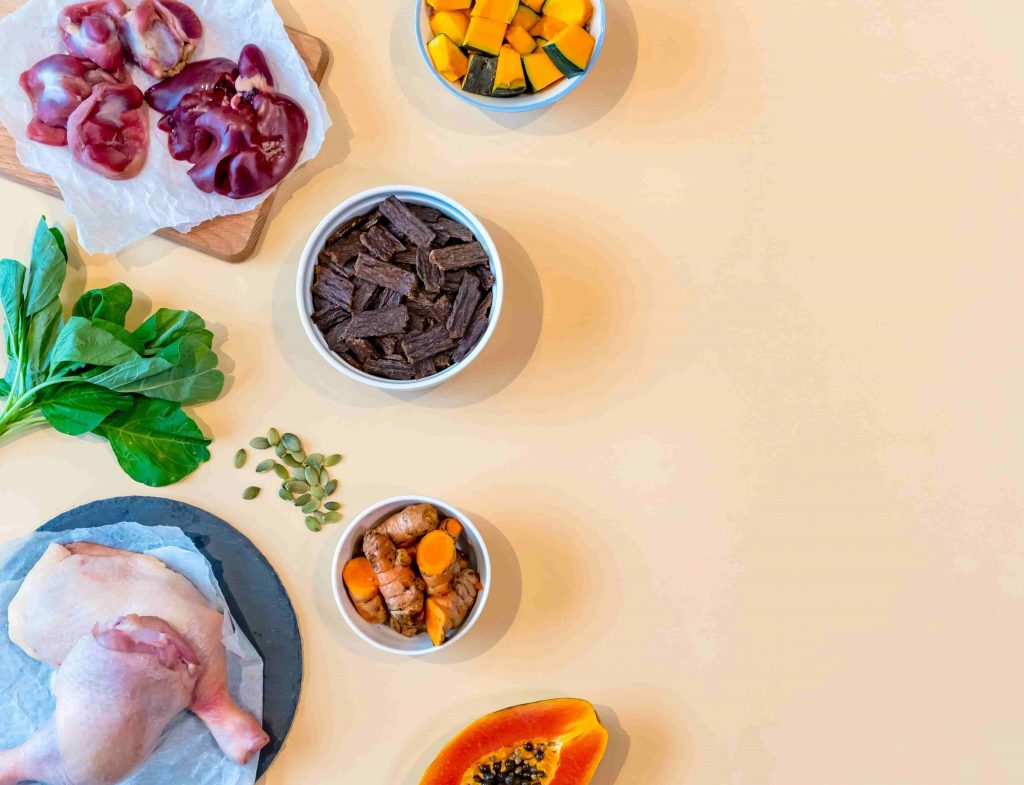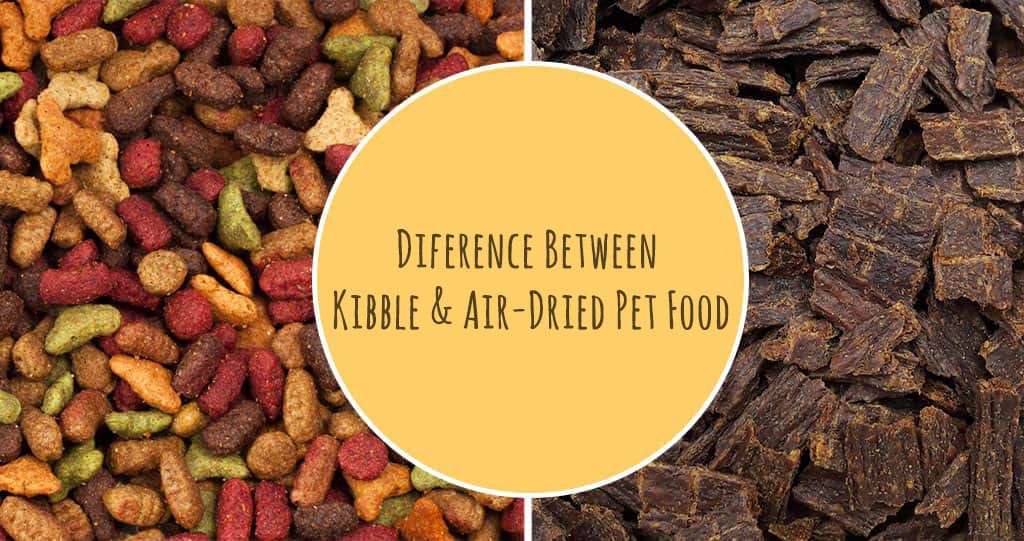Air-drying is one of the most ancient methods of preserving food, now used to create air-dried dog food and air-dried cat food with superior shelf-life. For thousands of years, travellers relied on dehydrated food like dried fish and meat for their long voyages. Modern machines now handle the drying process using low-heat air to remove moisture, making air-dried pet food a solid choice for your pet’s bowl.
As more pet parents seek options beyond regular kibble, questions like ‘is dry kibble bad for cats?’ or ‘is cat kibble bad for dogs?’ arise. Air-dried foods are becoming a popular choice for dog and cat parents looking for nutritious alternatives. But what’s the difference between kibble and air-dried pet food? Let’s dive into air-dried dog food and air-dried cat food to explore more.

What is air-dried and dehydrated pet food?
Air-dried dog food and air-dried cat food are essentially the same as dehydrated pet food. The main difference lies in their form and preparation. Dehydrated dog food and dehydrated cat food often require rehydration by adding water to a powder mix before serving. In contrast, air-dried dog food and air-dried cat food come in a ready-to-serve solid form that requires no additional preparation. Ultimately, the choice between the two depends on your feeding preference.
Research also suggests that air-dried foods may use higher-quality ingredients compared to dehydrated options. However, it’s always important to read the label to determine the best choice for your dog or cat.
But how is air-dried dog food and air-dried cat food made?
Well, to put it simply, air-drying removes water from food using low heat, preserving essential nutrients.
A dehydrator, the machine used for this process, comes in all sizes—from small kitchen units to massive commercial ones that can process large batches of air-dried dog food and air-dried cat food.
Air-drying has grown in popularity for its ability to protect heat-sensitive nutrients while effectively eliminating bacteria, yeast, and mold. This makes it an excellent method for creating healthy snacks or complete meals, whether you’re preparing dehydrated dog food or dehydrated cat food.
By retaining vital nutrients, air-dried diets keep pets healthy and full of energy.
Alright, now that you understand air-drying, let’s dive into the differences between kibble and air-dried diets!

Kibble vs. Air-dried pet food
The image above shows air-dried pet food in a bowl. If you take a closer look, you’ll notice it looks quite different from kibble—and for good reason. This difference comes down to vastly different manufacturing methods.
Kibble is made using a process called “extrusion,” which works like this:
- Many ingredients, such as meat meals, are heavily processed or cooked even before they reach the factory. This initial processing significantly reduces or destroys key nutrients.
- The processed ingredients are then steamed at extremely high temperatures and subjected to intense pressure until they form a uniform paste.
- The paste is cut into shapes and dried in a high-temperature oven.
- Finally, the product is packaged and shipped.
While extrusion is an efficient way to mass-produce pet food quickly, it comes at a significant cost. The multiple rounds of heating, high temperatures, and intense pressure destroy many of the vital nutrients your pet needs, including protein, vitamins, and antioxidants, greatly reducing the food’s overall nutritional value.
But are there any nutrients left? Yes, but they often come from artificial preservatives, synthetic vitamins, and additives, which are used to “balance out” the losses caused by the extrusion process.
Another key issue is that commercial extrusion machinery cannot handle ingredients with high moisture content. As a result, manufacturers rely heavily on highly processed and rendered ingredients like meat meals, which have far lower nutritional value than fresh ingredients.
Want to know more about how kibble is made? Watch the video below!
Air-drying protects nutrients
Vitamin C, E, B-1, B-6, B-9, antioxidants and Omega 3 & 6 fatty acids are all very sensitive to heat. These vitamins are often destroyed under high-temperatures, which is the case with a normal kibble.
In contrast, air-drying uses much lower temperatures.
The ingredients are dried without harming the naturally occurring nutrients and enzymes in the food. That’s why you typically don’t see long ingredient lists on air-dried pet food products.
Due to the low temperatures, air dried pet food is considered as nutritious as raw foods, barf diets and homecooked meals since the ingredients retain the same nutritional quality as in their fresh state.
So to recap: Feeding air-dried provides your pup or cat with the same nutrition as a raw diet but is easy to handle like kibble.

Fresh beats kibble
Air-drying allows for much higher inclusions of fresh ingredients, such as whole chicken, spinach, pumpkin and papaya that help your pet thrive.
If you’re interested in learning more about feeding fresh, you can find out more on our online pet store. You can also browse our cat and dog food.
You may like:
- 5 Misleading Label Tricks Pet Food Brands Use.
- Top 5 Benefits of Fish for Dogs.
- The Best Dog-Friendly Places in KL & PJ.
PledgeCare’s blog posts are designed to help and inspire pet parents who wish a healthier every day for their pets. If you’re curious about our air-dried raw, Malaysian, human-grade and super healthy pet food, check out: https://pledgecare.org/


Pingback: Greatest Cat Meals in Malaysia (2024) – Yaz?c?
Pingback: Best Cat Foods in Malaysia (2024)
What is the possibility of bacteria contamination to other sources when you are rehydrating air-dried and freeze dried dog food?
Hi Nancy! Great question—thanks for reaching out! This is something we’re often asked, so let me clarify.
The short answer: If your dog consumes the food within a few hours, the risk of contamination is nearly 0%. Air-dried dog food can sit out safely for several hours (e.g., 8+ hours), but the risk of bacterial growth increases the longer it’s exposed to moisture. This happens because adding water creates an environment where bacteria can thrive.
This applies not just to air-dried food but also to kibble or any other dry food: once water is added, the food will eventually spoil if left out in open air for too long.
That said, air-dried dog food and air-dried cat food are considered very safe options due to their production method. During the air-drying process, the food undergoes a critical “elimination phase,” where it is gently heated to around 80°C to kill harmful pathogens like Salmonella and E. coli. After this, it is dried at low temperatures for several hours to reduce water activity and moisture content. This ensures the food remains shelf-stable and safe for your pet.
I hope this clears up your concerns! If you have more questions, feel free to ask—we’re always happy to help.
Pingback: 11 Best Cat Foods in Singapore for a Healthier Cat | Best of Pets 2022
Pingback: 12 Best Cat Foods in Malaysia for a Happier Cat | Best of Home 2022
Hello! What are the temperatures involved in the air-drying process and how long does it typically take to dry a batch?
Hi Roxy! Air-drying typically involves temperatures below 90°C 🙂 In order to achieve a stable moisture content level to avoid bacteria growth, many companies dry their food for more than 10 hours (and we’ve seen certain manufacturers drying for up to 48 hours). I hope this answers your question, otherwise, feel free to ask!
Hi Roxy! A true politician might say, “It depends on the brand.” But luckily, we’re not politicians!
Here’s how we do it: We dry our air-dried dog food and air-dried cat food at around 80°C initially to eliminate harmful bacteria. Once that’s done, we lower the temperature to ensure the food retains its nutrients while achieving the perfect consistency. The drying time can vary depending on the specific batch, but on average, it takes about 10 to 15 hours.
I hope this answers your question! Let me know if there’s anything else you’re curious about.
Hi , do i need to soak the food ? As i need to add in some Liver-tune powder for my pet ? It does not really look like the normal freeze-dried raw food which i fed my dog .
Hello Patricia! It’s not necessary to soak it. However, some people do as their dogs cannot deal with the dry and flaky texture of air-dried. And yes, since it is air-dried, it can be different from freeze-dried raw food.
Pingback: Dealing With An Anxious Dog In a Big City - PledgeCare Malaysia
Pingback: 5 Misleading Label Tricks Pet Food Brands Use - PledgeCare Malaysia